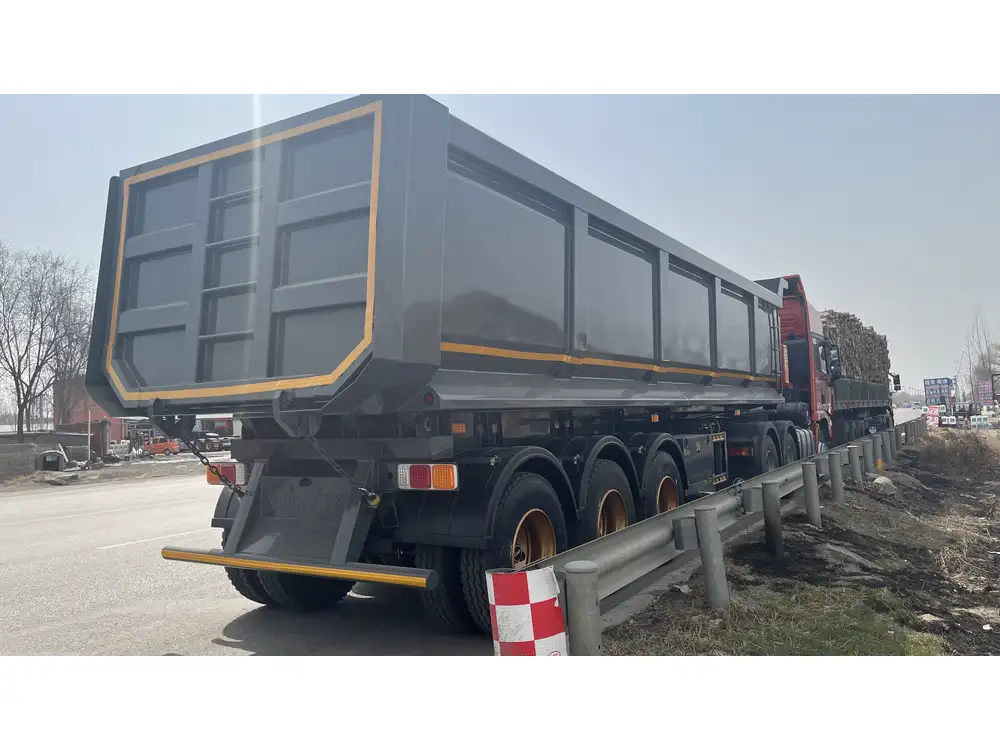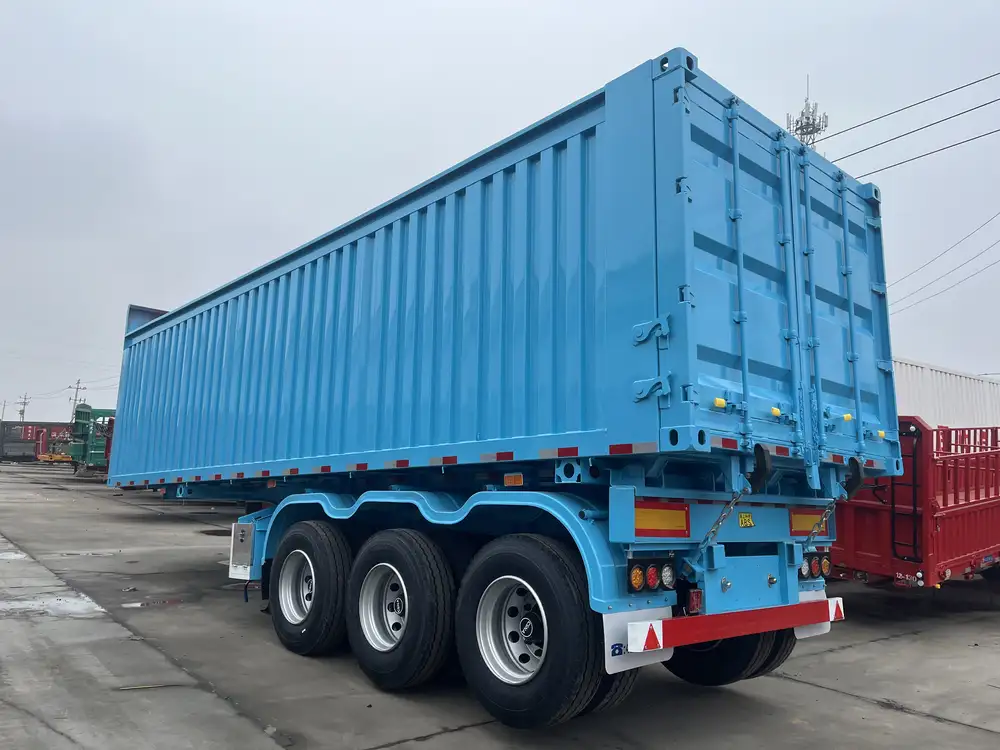Hauling equipment and machinery safely and effectively is crucial in the realms of construction, landscaping, and heavy-duty transport. One common query among professionals and DIY enthusiasts alike is whether a skid steer can be transported using a dump trailer. In this article, we delve into the specifics of hauling skid steers in dump trailers, covering essential aspects such as weight capacities, compatibility, safety considerations, and practical advice.
Understanding Dump Trailers
What is a Dump Trailer?
Dump trailers are specialized vehicles designed to transport heavy loads, equipped with a hydraulic lift mechanism that facilitates dumping the contents easily. Typically constructed from robust materials, these trailers vary in size and capacity, with models available for both light and heavy-duty applications.

Key Features of Dump Trailers
| Feature | Description |
|---|---|
| Construction | Heavy-duty materials like steel for long-lasting durability |
| Hydraulic System | Enables easy unloading of materials |
| Variety of Sizes | Ranges from small to large capacities for different needs |
| Towing Compatibility | Designed to be towed by various vehicles (trucks, SUVs) |
Understanding these features enables users to select the appropriate dump trailer for their specific hauling needs.
Skid Steers: An Overview
What is a Skid Steer?
A skid steer loader, or simply skid steer, is a compact, versatile piece of construction equipment commonly used for digging, lifting, and moving materials. Its distinctive four-wheel drive system allows for exceptional maneuverability, making it a popular choice for tight spaces.

Key Specifications and Capacities
| Specification | Detail |
|---|---|
| Weight | Typically between 1,500 and 3,000 lbs |
| Dimensions | Varies widely; average width: 42-60 in |
| Load Capacity | Commonly up to 3,500 lbs; check specifics |
Understanding the specifications of skid steers is essential for determining compatibility with dump trailers.
Compatibility of Skid Steers and Dump Trailers
Weight and Capacity Considerations
When considering hauling a skid steer in a dump trailer, it is vital to analyze the weight and capacity of both the skid steer and the trailer. Here are essential metrics to consider:
Weight of the Skid Steer: The weight of a typical skid steer ranges from 1,500 to 3,000 pounds. It’s crucial to know the exact weight of your model.
Dump Trailer’s Weight Capacity: Dump trailers come in various weight capacities, often ranging from 7,000 lbs to over 14,000 lbs. Ensure that the trailer can handle the combined weight of the skid steer along with any additional loads.
Towing Vehicle Capacity: A crucial aspect often overlooked is whether the vehicle towing the dump trailer can handle the weight. Ensure that the vehicle’s towing capacity exceeds the combined weight of the dump trailer and skid steer.

Trailer Design Types
When assessing compatibility, you should also consider:
- Flatbed Trailers: Ideal for loading equipment as they have a uniform surface area.
- Dump Trailers: Typically designed for transporting loose materials rather than heavy machinery.
While dump trailers can transport skid steers, the process requires extra care to ensure stability and safety during transport.
Safety Considerations When Hauling a Skid Steer
Proper Loading Techniques
To minimize risks while loading a skid steer into a dump trailer, follow these guidelines:
Use a Ramp: Ensure that you use an appropriate loading ramp designed for heavy equipment. Gradients should be gentle to facilitate easy transitions.
Center the Load: Position the skid steer centrally in the trailer to maintain balance. Failure to do so can cause sway during transit.
Secure the Equipment: Use tie-down straps or chains to secure the skid steer within the trailer. Ensure they are tight and prevent any movement.

Towing Precautions
Be cautious and consider the following when towing:
- Braking Distance: The added weight may require a longer braking distance, so plan ahead during transport.
- Speed Limitations: Adhere to reduced speed limits, especially if towing a significant load on uneven or winding terrain.
Advantages of Hauling a Skid Steer in a Dump Trailer
Versatility
By using a dump trailer, you can increase payload capacity by transporting tools, attachments, or materials alongside your skid steer. This ability provides operational efficiency as everything needed for a job can be hauled in one trip.

Cost-effectiveness
Opting for a dump trailer instead of specialized flatbed or lowboy trailers might result in cost savings, particularly if the primary function of your trailer is to haul various materials.
Disadvantages of Using a Dump Trailer for Skid Steer Transport
Limited Design Features
Dump trailers are not specifically engineered for equipment transport. The designed inclination, hydraulic system, and materials may not always be suitable for the stability needed when carrying heavy machinery.

Potential Loading Issues
Depending on the dump trailer’s design, the ramp system may not steep enough or might be too short, causing issues when loading the skid steer.
Alternative Hauling Options
If a dump trailer is not an ideal fit for transporting your skid steer, consider the following alternatives:
| Trailer Type | Advantages | Limitations |
|---|---|---|
| Flatbed Trailer | Designed for heavy equipment, easy to load | Less secure against tipping |
| Lowboy Trailer | Extremely low to the ground, stability | Requires larger towing vehicle |
| Enclosed Trailer | Protection from elements, secure transport | Heavier, less accessible loading |
Conclusion: Is a Dump Trailer Right for Hauling Skid Steers?
In conclusion, it is not only possible to haul a skid steer in a dump trailer but can also be a practical solution when executed with the correct precautions and considerations. Pay meticulous attention to the weight limits, secure the load effectively, and ensure your towing vehicle is appropriately matched for the job.
For those requiring frequent transport of skid steers, or if transporting over long distances, consider investing in or renting specialized trailers that offer increased safety and efficiency specific for machinery transport.
Ultimately, understanding the trade-offs can help you make informed decisions tailored to your unique needs. Always prioritize safety and compliance with local regulations when hauling heavy equipment, thus ensuring your operations run smoothly and effectively.



